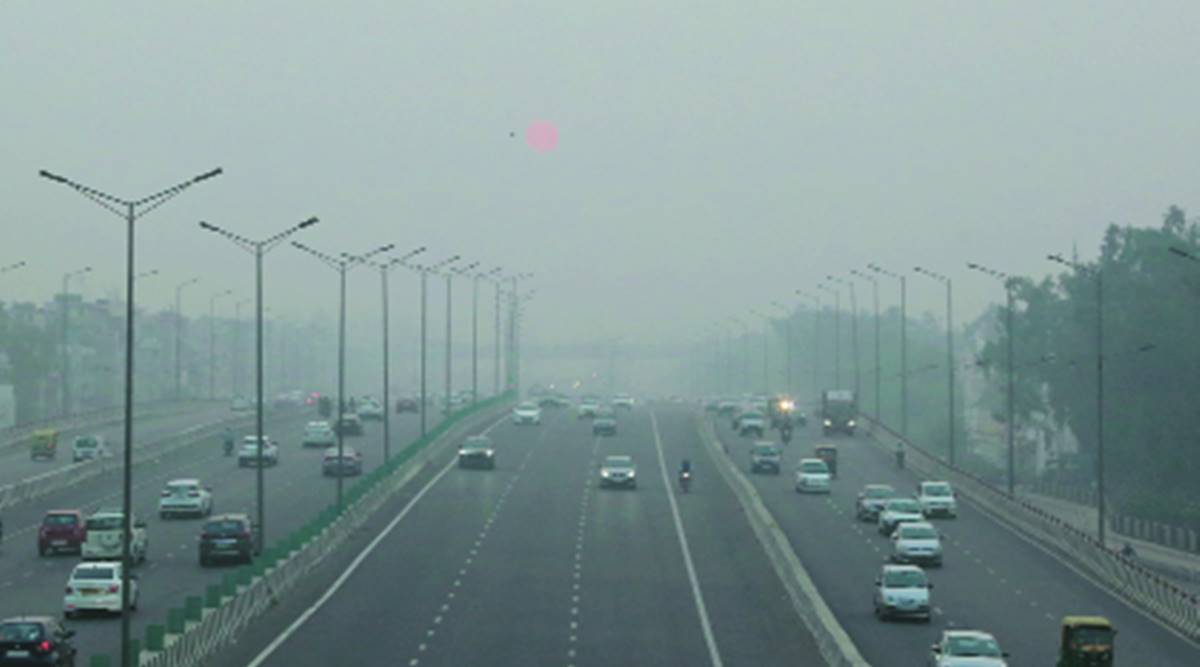 At NH-24, Sunday. The AQI is expected to dip further on Monday. (Express photo by Prem Nath Pandey)
At NH-24, Sunday. The AQI is expected to dip further on Monday. (Express photo by Prem Nath Pandey)With no respite in sight from farm fires in neighbouring states, and wind helping transport the resultant smoke and particulate matter to Delhi, the city spent the fourth day in a row in the severely polluted category. The AQI is expected to dip further on Monday.
The air quality index value was recorded at 426, a point higher than it was on Saturday.
According to NASA scientist Hiren Jethwa, who was been studying farm fires and air pollution in the region for the past several years using the Fire Information for Resource Management System (FIRMS) software, the fire count in the region has already touched the same level as those in 2016, as per the Moderate Resolution Imaging Spectroradiometer (MODIS) instrument.
Scientists have been analysing satellite data from the region for several years now and use it to compare the number of fires each year, which are detected on the system.
The year 2016 is considered among the worst years for farm fires, with around 1.27 lakh incidents being reported by the Indian Council for Agricultural Research (ICAR) using satellite remote sensing data. This has been on a decline since then, and just over 61,000 cases were recorded in 2019. This year, the counts are nearing the 80,000 mark and the farm fire season is not over yet.
According to Jethwa, the total fire counts surpassed the 2017 levels by November 4 and were 32% higher than those in 2018-19. Most fires are reported from Punjab.
Between September 21 and November 6, Punjab recorded a total of 52,970 fire counts, as per satellite data compiled by the Punjab Pollution Control Board. The figure in the same period in 2019 was 42,725 and 30,222 in 2018.
Stubble fire counts over Punjab, Haryana, UP, Uttarakhand and neighbouring areas stood at 3,780 on Saturday and its share in PM 2.5 in Delhi’s air was estimated as 29 per cent for Sunday.
The Ministry of Earth Sciences’ air quality monitor System of Air Quality and Weather Forecasting and Research (SAFAR) said the situation was unlikely to improve unless a drastic reduction takes place in stubble fire counts.
“Surface winds have become calm, which were moderate so far, and are forecast to stay low in magnitude for the next two days. This is the major factor due to which no quick recovery is expected unless a drastic reduction in fire counts takes place. Air quality is forecast to marginally deteriorate and stay at the severe to the higher end of very poor category for the next two days,” the official forecast said.